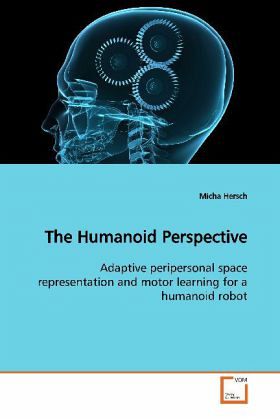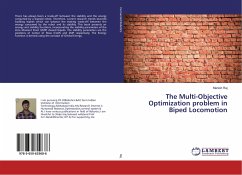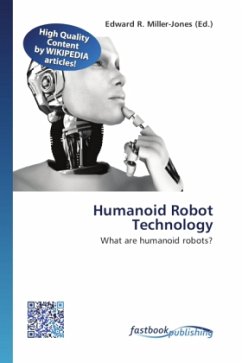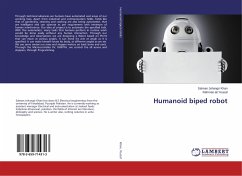
The Humanoid Perspective
Adaptive peripersonal space representation and motor learning for a humanoid robot
Versandkostenfrei!
Versandfertig in 6-10 Tagen
39,99 €
inkl. MwSt.

PAYBACK Punkte
20 °P sammeln!
In recent years, humanoid robotics have been theobject of growing interest and investments in theacademic and industrial worlds. And indeed,autonomous robots are announced to imminently enterour households. However, beyond the boastfuldeclarations, many challenges still remain to be meton this way. This book focuses on one of the mostfundamental ones, the question of action-orientedspace representation and motor learning. Highlightingthe main difficulties encountered by researchers, itshows how taking inspiration from the human spacerepresentation and motor control can lead to originalrobotics...
In recent years, humanoid robotics have been the
object of growing interest and investments in the
academic and industrial worlds. And indeed,
autonomous robots are announced to imminently enter
our households. However, beyond the boastful
declarations, many challenges still remain to be met
on this way. This book focuses on one of the most
fundamental ones, the question of action-oriented
space representation and motor learning. Highlighting
the main difficulties encountered by researchers, it
shows how taking inspiration from the human space
representation and motor control can lead to original
robotics solutions. It suggests a way to enable a
humanoid to learn how to control its limbs and to
learn simple tasks from human demonstrations.
In doing so, the book explores a fruitful but
difficult dialogue between engineering and cognitive
sciences, illustrating its potential benefits and
pitfalls. This book is intended to people wishing to
have a more precise idea of current advances in
humanoid space representation and motor learning, as
well as for scientists who may find it a useful
source of inspiration for their own research.
object of growing interest and investments in the
academic and industrial worlds. And indeed,
autonomous robots are announced to imminently enter
our households. However, beyond the boastful
declarations, many challenges still remain to be met
on this way. This book focuses on one of the most
fundamental ones, the question of action-oriented
space representation and motor learning. Highlighting
the main difficulties encountered by researchers, it
shows how taking inspiration from the human space
representation and motor control can lead to original
robotics solutions. It suggests a way to enable a
humanoid to learn how to control its limbs and to
learn simple tasks from human demonstrations.
In doing so, the book explores a fruitful but
difficult dialogue between engineering and cognitive
sciences, illustrating its potential benefits and
pitfalls. This book is intended to people wishing to
have a more precise idea of current advances in
humanoid space representation and motor learning, as
well as for scientists who may find it a useful
source of inspiration for their own research.












